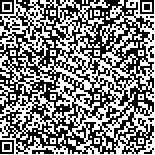| 摘要: |
| [摘要] 目的 观察视知觉学习对屈光不正性学龄前儿童的视力改善作用。方法 采用回顾性自身对照试验方法选择2009-01~2010-03在广西视光中心接受视知觉学习的屈光不正儿童53例,其中男28例,女25例,年龄(5.4±0.9)岁;矫正视力0.3~0.1 LogMAR。所有受试者均戴矫正眼镜接受视知觉学习,临床随访观察5个月,记录每月的矫正视力,视力检测结果对照LogMAR视力进行转换。采用SPSS13.0统计软件进行方差分析比较视知觉学习前、后各时间点的矫正视力差异。结果 (1)53例最佳矫正视力正常的屈光不正儿童在视知觉学习前和视知觉学习后1~5个月的矫正视力分别为(0.163±0.068)、(0.079±0.066)、(0.060±0.063)、(0.042±0.055)、(0.037±0.056)、(0.028±0.047)LogMAR。(2)重复测量资料的方差分析结果显示:视知觉学习后各时间点的矫正视力与视知觉学习前相比差异均有统计学意义(F=164.655,P<0.01),即所有受试者的矫正视力均较训练前得到明显改善。(3)LSD法进行各时间点间的两两比较结果显示,视知觉学习后第1个月、第2个月、第3个月两两之间差异均有统计学意义(P<0.01),但第3个月、第4个月之间差异无统计学意义(P=0.167)、而第4个月与第5个月之间差异亦有统计学意义(P<0.05)。结论 视知觉学习可在短期内迅速改善学龄前儿童的矫正视力。 |
| 关键词: 视知觉学习 矫正视力 学龄前儿童 |
| DOI:10.3969/j.issn.1674-3806.2010.12.08 |
| 分类号:R 788.1 |
| 基金项目:广西医疗卫生重点科研课题(编号:桂卫重200957) |
|
| Short-term outcome of perceptual learning in pre-school children with ametropia |
|
ZHAO Wu-xiao, LIU Wei-min, XIAO Xin, et al.
|
|
Department of Vision Science and Optometry Center, the People′s Hospital of Guangxi Zhuang Autonomous Region, Nanning 530021, China
|
| Abstract: |
| [Abstract] Objective To investigate the therapeutic effect of perceptual learning in pre-school children with ametropia.Methods A randomised, self-controlled experiment. Fifty-three pre-school children with ametropia (male 28 cases, female 25 cases) aged (5.4±0.9) years old, were enrolled in visual science and optometry center between January 2009 and March 2010. And original best corrected visual acuity(BCVA) ranged from 0.3 to 0.1 in LogMAR chart. All subjects were corrected spectacles and underwent perceptual learning for no less than 5 months. All of them were followed in each month and BCVA were recorded in LogMAR visual acuity. BCVA were compared before and after perceptual learning by variance analysis (SPSS 13.0 version).Results (1)BCVA of the 53 pre-school children with ametropia before and after perceptual learning were (0.163±0.068)LogMAR,(0.079±0.066)LogMAR,(0.060±0.063)LogMAR,(0.042±0.055)LogMAR,(0.037±0.056) LogMAR, (0.028±0.047)LogMAR, respectively. (2)Statistical outcomes showed that BCVA in each month after perceptual learning were improved significantly compared with BCVA before perceptual learning (F=164.655,P<0.01 ). (3)LSD showed that BCVA in 1-, 2-, and 3-month were different from each other(P<0.01), but no significant difference between 3- and 4-month after perceptual learning(P=0.167). However, significant difference was showed between 4- and 5-month after perceptual learning(P<0.05).Conclusion Perceptual learning could improve BCVA of pre-school children with ametropia in a short term. |
| Key words: Perceptual learning Best corrected visual acuity Pre-school children |

